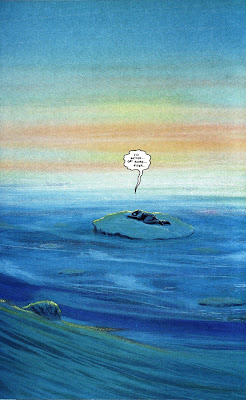Shamballa
Anderson Psi Division
by Alan Grant (writer) and Arthur Ranson (art)
2000 AD, 1991
'Shamballa' (2000 AD Books, 96 pp., 1991) compiles the episodes first serialized in the pages of 2000 AD comics from October to December 1990 (progs 700-711).
The story features Judge Anderson, a telepath and Judge Dredd's colleague. As 'Shamballa' opens, there has been an epidemic of supernatural phenomena (some of them with lethal consequences) around the world.
Anderson, being a telepath, is particularly receptive to these phenomena; concerned that they herald an approaching apocalypse, she consults with Doc Rickard at the Department of Fortean Events. This results in a team of Mega-City One's psi personnel embarking on a trip to East-Meg, there to join their Russian counterparts and embark on a collaborative investigation into the source of the phenomena.
I won't give away any spoilers, save to say that the danger to the world is real, and before things can be set right, some sacrifices will have to be made.........
'Shamballa' features a good plot by veteran writer Alan Grant, who avoids overloading the story with sub-plots and sub-sub-plots, something that by the early 90s, too many comic book writers were wont to do, in the hopes of emulating Alan Moore.
But where 'Shamballa' excels is in the intricate artwork by Arthur Ranson, one of the most talented artists in British comicdom. Ranson's work for 2000 AD for various Judge Anderson episodes, Button Man, and Mazeworld represents some of the best illustration ever to appear in that publication.
At 11.5 x 9 inches, this trade paperback maintains the sizing of the original 2000 AD issues, and presents Ranson' artwork without the 'miniaturization' that afflicts British comics when they are republished by American publishers and forced into the dimensions of American graphic novels. By maintaining the original dimensions, with this graphic novel it's much easier to admire the details of Ranson's penciling as well as the careful coloring (which, apparently, also was done by him ?).
My only complaint about this trade paperback compilation is that it doesn't include the covers, or interior title pages, from the original issues of 2000 AD.
Summing up, copies of 'Shamballa' in good condition can be obtained for affordable prices from your usual online vendors. If you are a fan of 2000 AD, its artists, or British comics in general, then getting a copy is well worth your while.
Links of Steel, 4/28/2024
7 hours ago






















































































